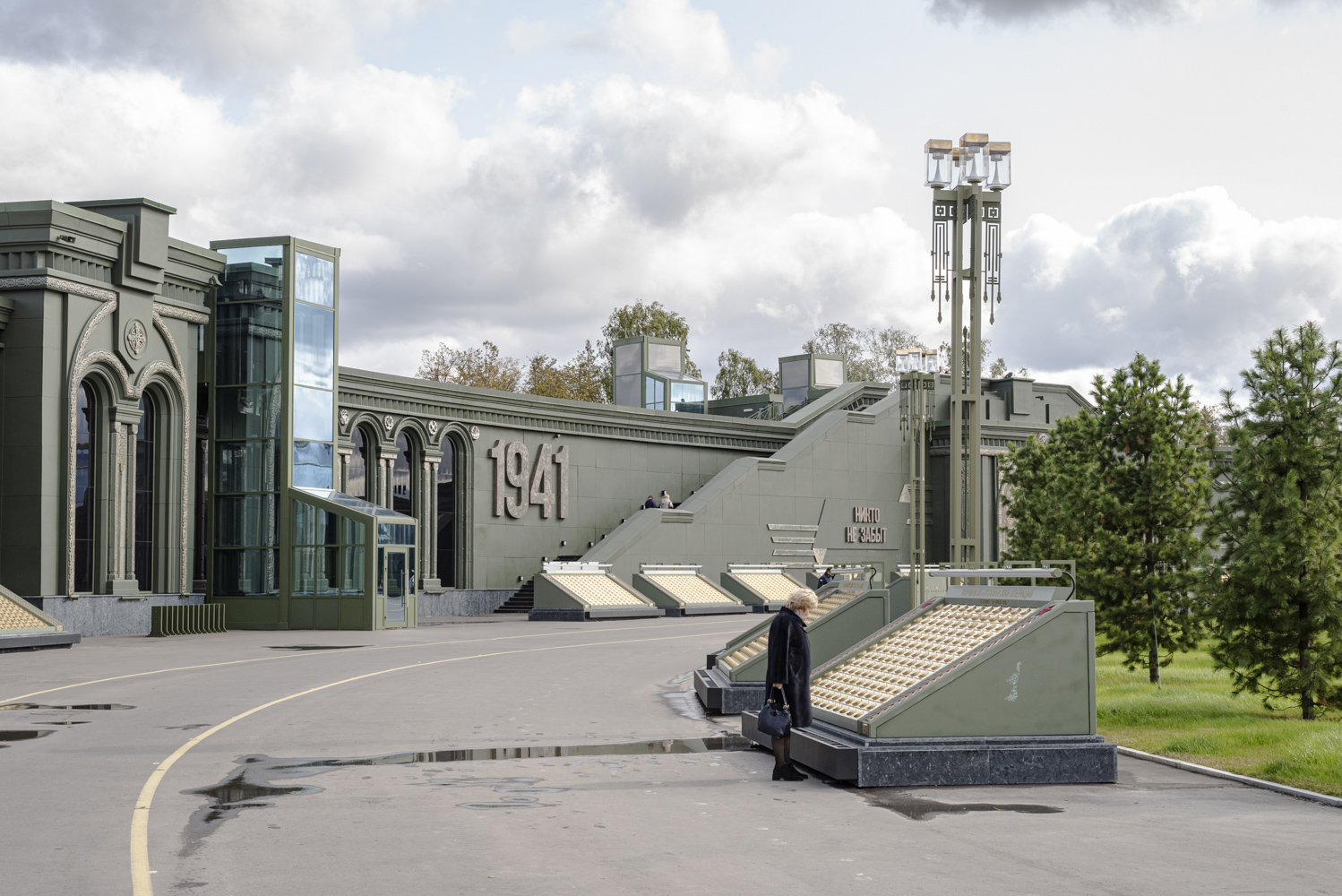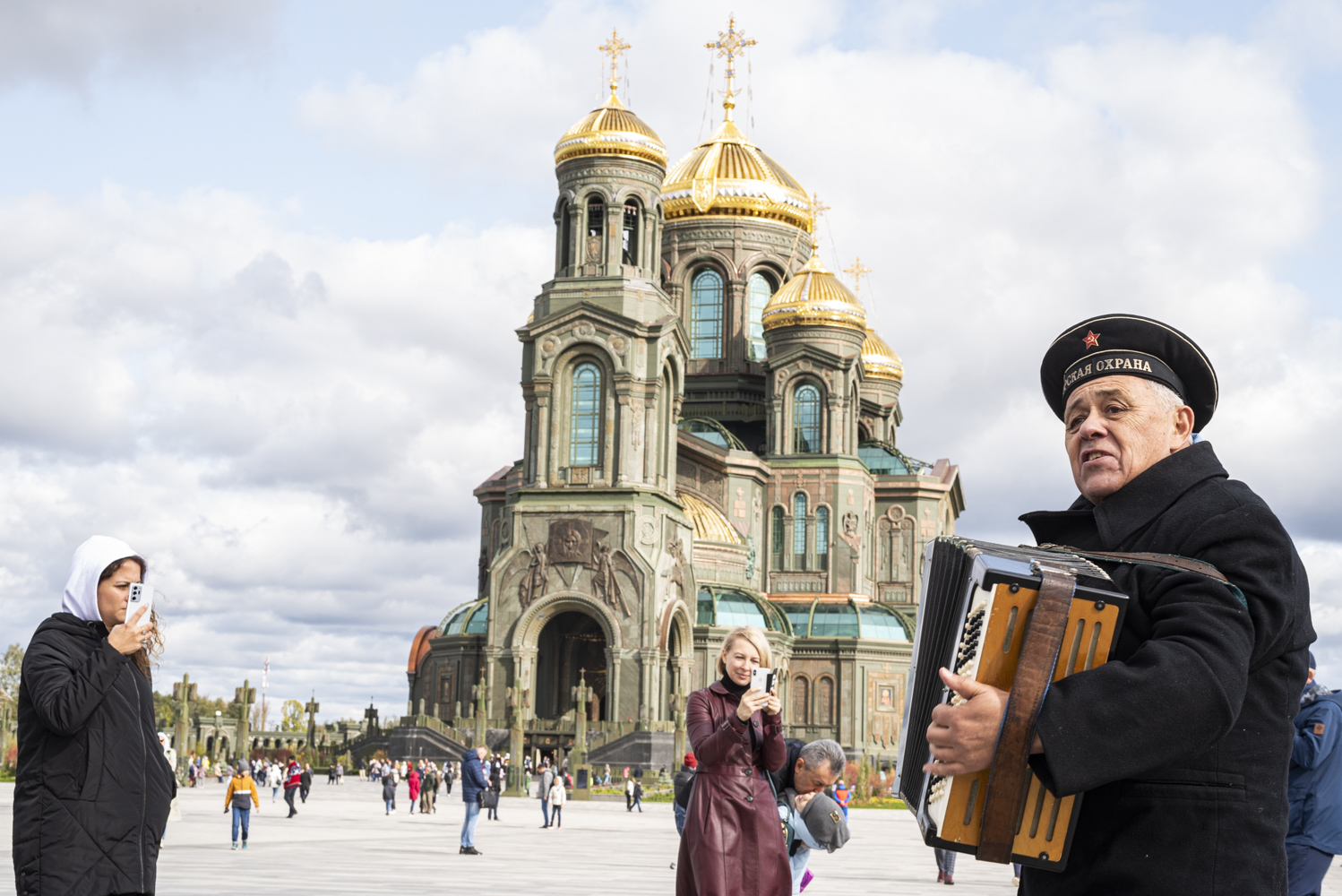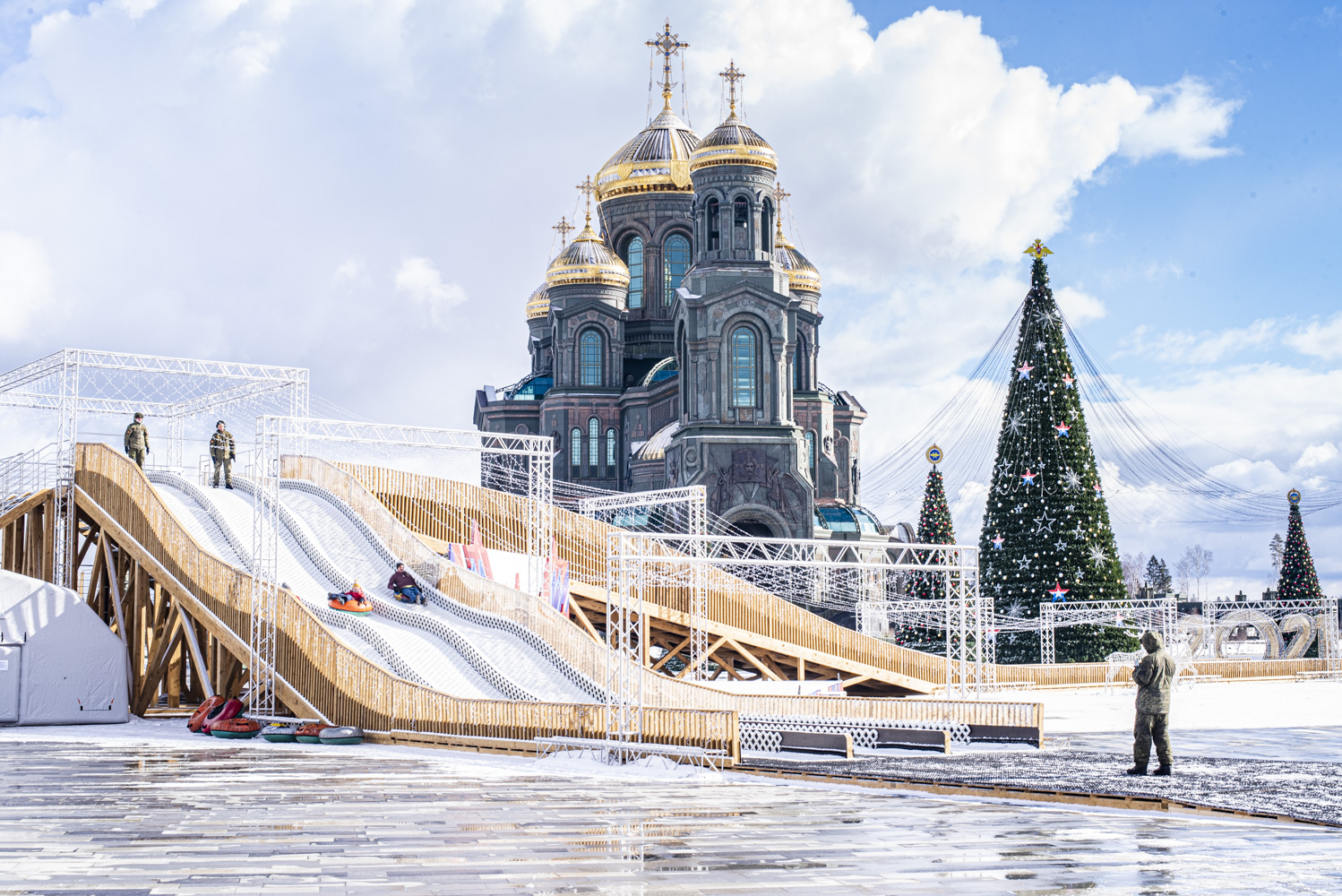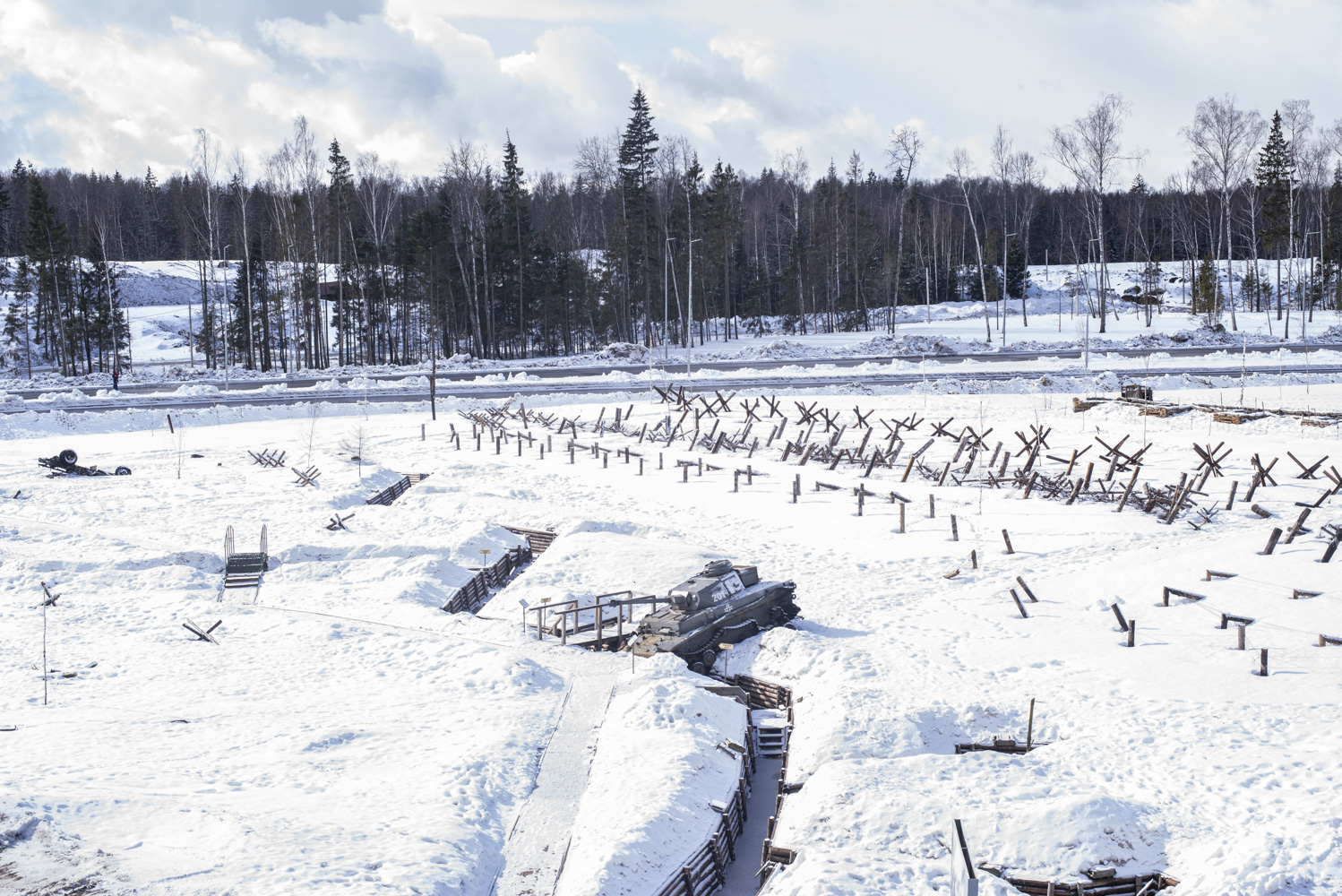The improbable Cathedral of the Russian Armed Forces.
At the occasion of the 75th celebration of the end of the second world war, Russian armed forces have been offered a singular present, which mixes history, war and religion.
The architecture of this monumental project, financed with opaque funds, is surprising. Situated inside the newly constructed Patriot Park, and belonging to the Russian Defense Ministry, this vast edifice, of khaki colour, ambitions to become a major historical and memorial place around Moscow. The inside ornaments are mainly composed of mosaics in tribute to military campaigns, and the pride of the Russian army. Murals and other orthodox idols are remembering the religious function of the building.
Outside the religious monument, a replica of second world war battlefields has been installed, with trenches, tanks, and other planes captured by the enemy. This park is dedicated to the awareness of young generations of the extreme conditions of the war. These authentic attractions are, however, appreciated by the visitors. For many families, it’s the occasion to gather to honour the memory of relatives who disappeared during the second world war. Dubbed “the great patriotic war”, more than twenty million Soviets lost their lives.
However, this cathedral is, before everything, the most salient example of the convergence of the army and orthodox church, which has been taking place under the aegis of Vladimir Putin. At the beginning of the year, voices rose when a mosaic representing Stalin was meant to take place in the cathedral. Under his regime, state atheism was the rule, and members of the orthodox churches were persecuted. For other critics, this place looks more like a sanctuary for Mars, the god of war.



























